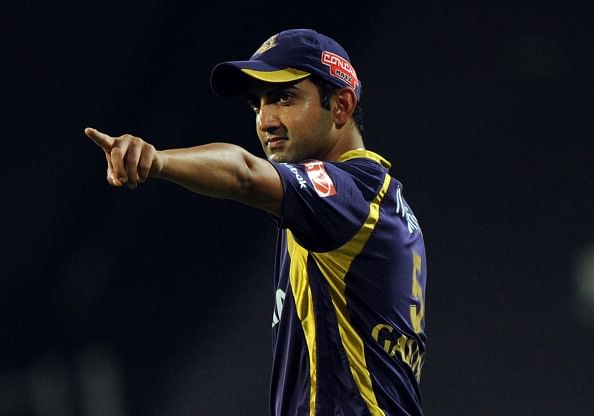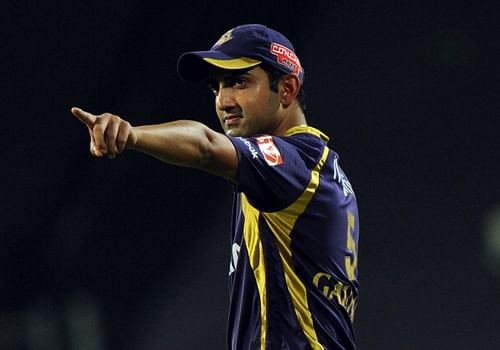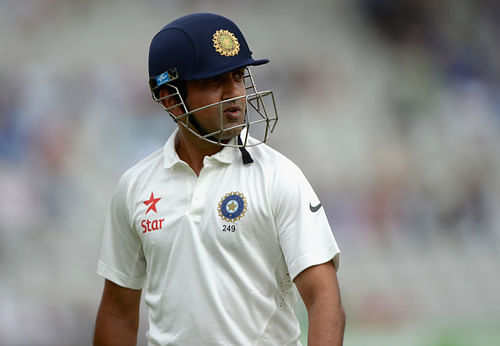
Gautam Gambhir and his undying spirit towards the game of cricket

29 March 2009, India v New Zealand, Napier: Following on, the Indian team were in tatters after amassing only 305 in the first innings, in response to New Zealand’s mammoth total of 619/9. With two days of play still remaining, only a miracle could have saved India from an embarrassing defeat. It was then that Gautam Gambhir took it upon himself to guide the team to safety. He faced the likes of Chris Martin and Daniel Vettori for over eleven hours, eventually making 137 off 436 deliveries to ensure an unlikely draw for his team.
2 April 2011, India v Sri Lanka, Mumbai: The pressure of playing a World Cup final at home seemed to have affected the nerves of the Indian team as they were caught reeling at 31-2, chasing a competitive 275 to win. Gambhir combined beautifully with Virat Kohli to play the innings of a lifetime, scoring a brisk 97 off 122 deliveries. His ability to handle the pressure at crunch moments and his calm head were the major reasons why Mahendra Singh Dhoni’s boys ended up lifting the trophy after a gap of 28 years.
Fast forward to the England series earlier this year, which presented the southpaw an opportunity to make a comeback into the national team after he was axed in 2013; his scores of 4, 18, 0 and 3 in the only two matches that he played do not do justice to the Delhite’s calibre, with many critics even suggesting that he might have played his last Test for India.
From being called the “second wall” and even “India’s best Test opener after Sunil Gavaskar” to now struggling for a place in the team, his story has been nothing less than a roller coaster ride.
Missed chances
Gambhir has never had it easy in life. Overlooking his lucrative family business, he found his calling in cricket. Since his teenage years, he has had to fight for a place in the team. He missed out on the Under-14 and Under-19 World Cups when, by his own admission, he should have been there. After making his debut for India in 2003, his biggest disappointment came when he was dropped from the 2007 World Cup squad. He has been quoted as saying, “I wanted to give up on the game after my omission from the WC. I didn’t pick up a bat for months and I just couldn’t motivate myself.”
However, his passion and the hunger for the game and his determination to succeed at the highest level is what drove him out to the centre and what followed was an extended purple patch, across formats.
The Gambhir flourish
Gambhir had a dream run season from the inaugural T20 World Cup in 2007, which India won. He top scored in the final against Pakistan with a 75 and finished the tournament with 227 runs at an average of 37.83 with three half-centuries and was instrumental in giving the team the ideal platform.
5 centuries in as many matches and a record 11 consecutive fifties in 2009 meant Gambhir received the ICC Test player of the year award. He was then duly handed the vice captaincy of the national team. The inside-out cover drives, the ability to rotate the strike, the comfort level against the spin and his aggressive character by nature made him a complete package.
The downslide begins
The Indian team faced its biggest high on 2 April 2011 when Gambhir’s 97 led India to its second 50-over World Cup triumph. Soon after, the team slacked off suffering a 0-8 routing in England and Australia. His poor form, where he managed only 283 runs in the two tours, eventually led to him being axed from both the formats during the home series against the Englishmen in 2012-13, and ever since he has remained out-of-favour.
Captaincy and aggression

In 2012, reports about a rift between the Indian captain and Gautam Gambhir were rife. His elbowing of Shane Watson or his spats with Kamran Akmal and then with teammate Virat Kohli in an IPL encounter prove why the Arjuna Awardee is known to wear his heart on his sleeve.
Gambhir doesn’t mince words in reprimanding a bowler or a fielder, and often the umpires, too, have to bear the brunt of his anger. The otherwise reserved Gambhir who prefers to be a silent observer off the field admits that cricket gets the better of his emotions, and he often loses his temper in the heat of the moment; he owes this to his personality of seeing winning as the only objective. After all, captains like Sourav Ganguly, too, were known for their hard playing ways, and, as long as the team is winning, the fans have no complaints. At the end of the day, not every player can be calm like Dhoni or Rahul Dravid, and Gambhir has no qualms about his leadership methods.
He was picked up by Kolkata Knight Riders after his public displeasure at being not retained by the Delhi Daredevils outfit ahead of the 2011 auctions. More determined than ever, Gambhir changed the fortunes of his new team after 3 years of frustrations, leading the Knights to 2 IPL titles in 3 years. Not many captains can overshadow Dhoni, but Gambhir managed to do just that by backing players who were basically discards and by going in with a strong bowling unit in a game essentially meant for the batsmen. It does take a strong leader to stage 9 wins on the trot and to lift the IPL trophy after the franchise had won just 2 out of the 7 games initially played. Wasim Akram, the bowling coach of the Shah Rukh Khan-owned franchise, doesn’t hesitate from stating that Gambhir is the best captain in the IPL. For the record, he has won all 5 matches as India captain, as well.
His successful captaincy stint, however, did not make him blind to his failures with the bat in the early part of the 2014 season, and he offers a rather harsh assessment of himself by admitting, “Gautam the leader is very harsh on Gautam the batsman. In fact there were occasions in this year's IPL when Gautam the captain was about to drop Gautam the batsman. The way I see it is that like rest of the 10 players I should also be in the team on merit and definitely not because I am the captain.”
The ultimate team man
Not many are aware that Gambhir signed up to play for Essex in a bid to return to the national colours last year. His mental strength and passion were evident when he refused to miss any championship games to head home after hearing the news of 2 deaths in his family, terming the move as “unprofessional.”
“I wanted to see whether I could concentrate on my cricket and play for Essex with the same passion despite what I was going through personally,” said Gambhir.
Gambhir will forever be the underachiever, never given the due recognition. He was the top scorer in both the T20 and 2011 WC triumphs. On both the occasions, he put up a resolute fight to ensure India’s safety. And in both the finals he watched helplessly as his performances were overlooked with others hogging the limelight, be it Joginder Sharma in 2007 or Dhoni in Mumbai. In Wankhede, he missed out on a well deserved century as he looked to play Thisara Perera for a big one so that the run rate could be met with; in the process, he sacrificed what could have easily been a century in a World Cup final. Yet he never made a hue and cry about it.
Gambhir is stubborn and a fighter. Even at the age of 33, he has no issues about rubbing shoulders with domestic players, in the hope that he would don the blue jersey once again. You can push him down, but his eyes will forever reek of hunger as he walks towards his destination. He might play for the nation again (considering the extended bad form of the current openers) or might not, but one thing is certain: for him, falling and failing isn’t an option.
You can either hate him or love him, but you can’t ignore him and his contributions.